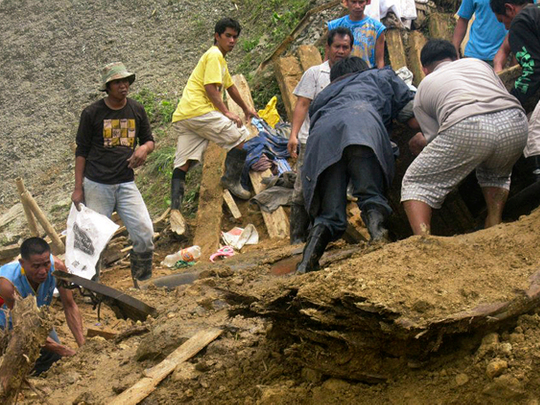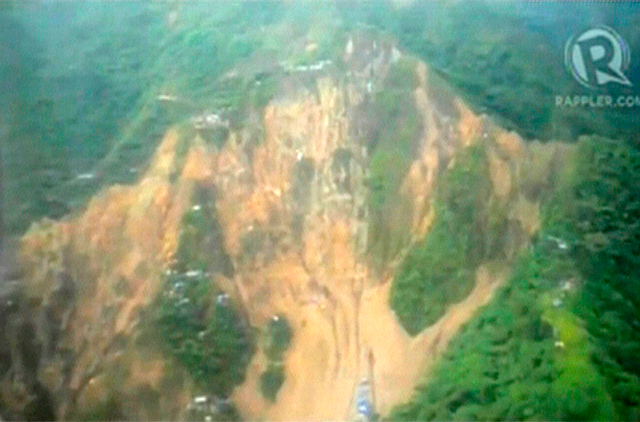
Pantukan: At least 25 people were killed in the southern Philippines on Thursday when a landslide buried gold prospectors who had refused to leave an area declared too dangerous for habitation.
Up to 150 people were missing after the landslip hit a remote mountain community on Mindanao island that was settled by migrants in search of instant riches despite being declared off-limits last year due to the danger of landslides.
Rescuers using only hand-held tools pulled 25 bodies and 15 injured residents from the rubble after the dawn landslide in Napnapan, near the town of Pantukan, civil defence chief Benito Ramos told AFP.
"A military unit is in the area but they are basically digging with their hands," he told AFP.
Ramos' agency, the National Disaster Risk Reduction and Management Council, raised the number of missing to 150 people from an initial estimate of 100, and said the health department was transporting 150 body bags to the site.
The local government meanwhile said the rescue had been halted amid heavy rain from a storm off the coast and fears of more landslides.
Local military official Colonel Lyndon Paniza, who is coordinating the rescue from Pantukan, about two hours away via rugged mountain roads, said rescuers fear there could be more fatalities.
"We expect many were killed since the worst-hit was the middle, where there are more than 50 shanties," Paniza told AFP.
The landslide buried an area measuring about 7,500 square metres as people slept, Paniza added.
The provincial government and local mining firms have been asked to bring heavy equipment to the village.
Pantukan and nearby Monkayo, both on the west flank of Mindanao's Pacific Cordilleras mountains, have drawn thousands of gold prospectors for years.
Their largely unregulated activities have made the mountainside unstable and caused a series of deadly accidents, with officials also saying a 2.8-magnitude quake in the area about three hours earlier could have triggered the disaster.
Paniza said another landslide had occurred about two kilometres away on April 22 last year.
Local officials said that landslide had killed 14 people, while another in 2009 killed 26.
Acting on the advice of national government geologists, local officials ordered the evacuation of all Pantukan gold rush areas last year.
However, they said some people had returned, possibly joined by new migrants drawn by stratospheric gold prices.
"These are small-scale miners who tunnel into the side of the mountains like rats," Ramos told AFP.
"This had been declared a no-man's-land, where people are forbidden to live. Local officials must explain why people are still there despite the national government's warning," Ramos told a news conference.
"It's obvious that the gold attracts them. We cannot guard the mountain 24/7 because we have other responsibilities."
The military is fighting against a decades-long insurgency in the region and officials say rebels extort money from the gold prospectors to finance the rebellion.
Provincial governor Arturo Uy said the local government had forcibly evacuated the residents after last year's landslide.
"But the area is remote and the local government has difficulty monitoring the area," he told GMA television.
Miners had been warned of the danger, said environment and natural resources secretary Ramon Paje.
"We had already told them even before the April incident happened that the top of the ridge is cracked, and it was just a matter of time before they (slopes) caved in", Paje told ABS-CBN television in an interview.
Paje and Ramos also cited the minor quake, with an epicentre about 100 kilometres to the northeast, as a possible contributing factor.
Ramos said two military helicopters were airlifting more rescuers to Pantukan from the southern port of Cagayan de Oro, one of two Mindanao cities badly affected by flash floods last month that killed more than 1,200 people.












